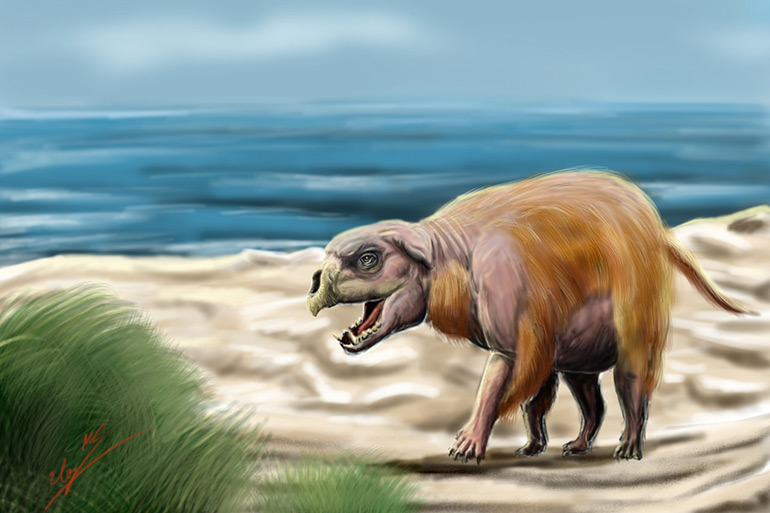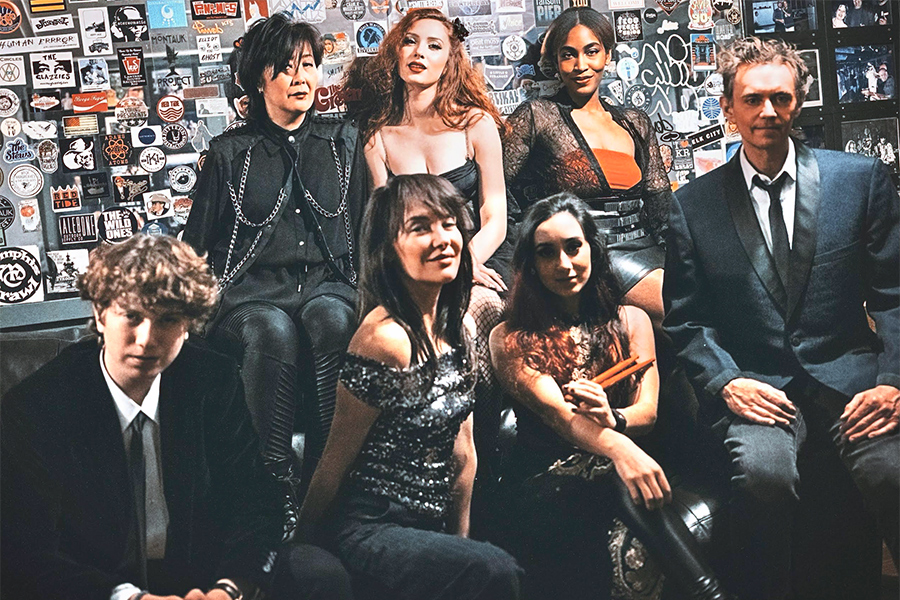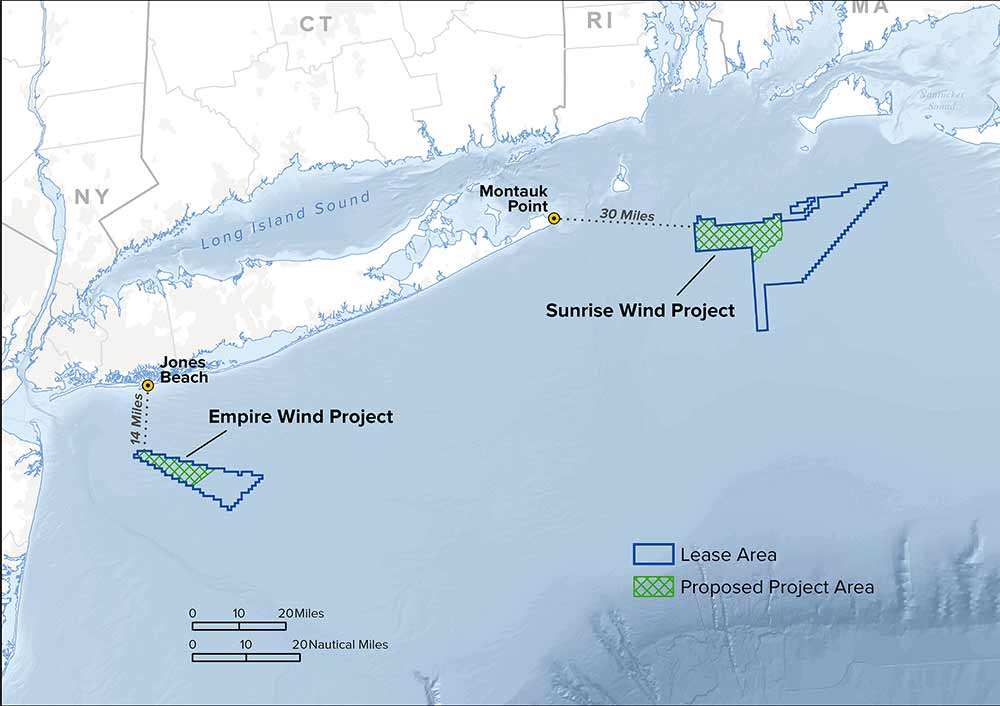The Montauk Monster Legend Endures 10 Years After It Broke the Internet

Back in July 2008, just before the infamous “Montauk Monster” photo captured the world’s collective imagination, I was a couple of months into my second year as a beat reporter for The Southampton Press. The image of this bloated, hairless and sunbaked animal carcass that washed ashore on Ditch Plains beach came across my desk and I immediately approached my editor about doing a story. I was told no, our readers wouldn’t be interested in seeing what was nothing more than a dead raccoon on the sand. He was, of course, dead wrong.
As we fast approach the monster’s 10th anniversary, I still lament missing my chance to play an early part in this enduring bit of local lore. As it happened, The East Hampton Independent was first to publish the story, headlined “The Hound of Bonacville,” in their July 23, 2008 issue. But things really picked up steam after the now-defunct news site gawker.com got hold of it on July 29.

“No, Lizzie Grubman’s still alive. This is an actual monster, some sort of rodent-like creature with a dinosaur beak,” Richard Lawson wrote beneath the photo on gawker.com. He went on to suggest it could be the result of a genetic experiment gone awry at the mysterious Plum Island Animal Disease Center, “but unless the government is trying to design horrible Montauk monsters that will eat IEDs and fart fire at bad Iraqis, we’re not sure why they would create such an unthinkable beast.”
Most sensible people probably understood that the Montauk Monster—a term coined by leading cryptozoologist and Bigfoot researcher Loren Coleman—had a fairly pedestrian explanation, but boy, was it fun to speculate!
Bloggers jumped on the Plum Island idea. People guessed it might be a turtle without its shell, or some equally unlikely freak of nature. TV naturalist Jeff Corwin weighed in. Jesse Ventura investigated the case on his Conspiracy Theory show. Coleman revisited it in a 2009 episode of History’s Monster Quest. Nearly every serious examination concluded it was indeed a decayed raccoon carcass.
Soon after the picture went viral, I even remember rumors it was a savvy marketing ploy by Monster Energy Drink. It was not.
Montauk Monster mania took such hold that first summer, my beleaguered and otherwise eminently talented and qualified East Hampton Press editor, Peter Boody, was compelled to write an August 13 op-ed explaining, if not defending, his choice to ignore the story.
“A dead, par-boiled, skinned dog on the beach in Montauk didn’t really count to me,” Boody wrote. Yet he acknowledged the Montauk Monster was, at that time, now known all over the world just two weeks after its publication in the Indy (stories disseminated online a bit more slowly in 2008). “It was gross,” Boody argued. “It looked to me like the carcass of a dead dog, maybe a pit bull, some sad creature that had fallen off somebody’s boat.”
I was deeply frustrated when he declined the story—and even more so when the “monster” became an international sensation—but time has given me some perspective on the matter. Perhaps we do mellow with age. Now closer to 50 than 20, and with more experience as an editor behind me, I can better understand Peter’s decision. And that’s saying something, considering I’ve worked for nearly six years at Dan’s Papers, where we tell stories of a giant Ecuadorian eel, the Hamptons Subway, a local police submarine and dozens of other fabulist tales.
Still, the question remains: Was the Montauk Monster newsworthy? Of course it was.

A Google search shows it’s still a popular subject in articles, videos and podcasts. The creature lives on in artistic renderings—a zombie raccoon that’s instantly recognizable—in a variety of styles and media. Numerous stories featuring similar dead animals continue to surface on news sites, all referring back to the original.
It all points to the power of that first photograph. Like Marines raising the flag on Iwo Jima, or the hooded man at Abu Ghraib prison in Iraq, an iconic photograph has real power. Perhaps a more appropriate comparison: Consider the first shadowy silhouette of the purported Loch Ness Monster. The Daily Mail published the grainy photograph in 1934. And despite being proven a hoax, Nessie’s legend has grown stronger, inspiring serious investigation and a massive tourism boom over the nearly 85 years since the photo first appeared in black-and-white.
A local Montauk woman, Jenna Hewitt, and three of her friends, found and photographed the Montauk Monster on July 12, 2008. What would later be identified as a raccoon looked strange, with its beak-like, exposed bone snout and articulated fingers that immediately precluded it from canine, feline or bovine origins. Even on that initial viewing, Hewitt told The Independent how they joked it might be from Plum Island. Editor Rick Murphy said it might be Satan “and that the devil’s demise meant only good things would happen henceforth.”
People were having fun with it from that first tongue-in-cheek article.
And like all good myths and legends, the Montauk Monster’s veracity could never be proven. At the same time, believers could not be fully discounted. The carcass was never brought in for DNA testing, nor could its skeleton be placed alongside a set of raccoon bones for true scientific comparison. Or could it?

According to The Independent, the “fly-riddled” body was removed from the beach to be buried, or so they hoped. Later, an August 3 Newsday article revealed that a nameless Montauk local had taken the monster home, noting, “It’s only about the size of a cat,” and “Now it’s decomposed and it’s just skull and bones.”
I’d bet good money the Montauk Monster’s remains still live in someone’s backyard or in a garage meat freezer. Or perhaps its cleaned skeleton is in a cardboard box collecting dust in the back of an aluminum shed. Or, if we’re having fun speculating, maybe a wealthy hedge-funder tracked it down and paid a handsome sum to acquire the monster for his secret collection, where it now stands alongside a mounted chupacabra, a sasquatch scalp and a plaster cast of Bigfoot’s famous footprint?
The possibilities are many and enormously fun to imagine. Just like the stories of clandestine government programs and subterranean labs at Camp Hero, or ghosts at the lighthouse, the Montauk Monster adds a little more magic to The End’s bewitching oeuvre. And we like it that way.



